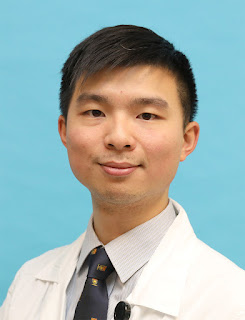WSO Stroke Support Organisations in Singapore
and Malaysia led inspiring events to raise awareness and celebrate life after
stroke. The events also raised the flag for the World Stroke Campaign virtual relay Asia route #DontBeTheOne
For more information about SNSA visit:
Singapore
National Stroke Association (SNSA) held its fourth Stepping out for Stroke
event on Saturday 12th October. The event had over 800 registered
participants including nearly 100 stroke survivors and carers.
Stepping out for
Stroke is SNSA’s annual fundraising event, where it encourages participation
from people affected by stroke, medical professionals, students and the wider
community in whatever way they choose; walking, running, cycling, and in
wheelchairs and pushchairs. The Mayor of Central Singapore CDC, Denise Phua was
the guest of honour and talked passionately about the need to prevent avoidable
strokes and to support life after stroke.
Aanandha Sharurajah, who had a stroke in 2012 and is a member of the SNSA Executive Committee said, 'Stepping out for Stroke was a really important day for me, as it was a day my whole family was involved in. We all wore our purple t-shirts, showing that we were standing for stroke survivors and greater awareness of this illness, and it was the largest number of people I've witnessed so far standing for stroke'.
Aanandha Sharurajah, who had a stroke in 2012 and is a member of the SNSA Executive Committee said, 'Stepping out for Stroke was a really important day for me, as it was a day my whole family was involved in. We all wore our purple t-shirts, showing that we were standing for stroke survivors and greater awareness of this illness, and it was the largest number of people I've witnessed so far standing for stroke'.
The event was
an opportunity to mobilise the community to raise funds, increase awareness of
stroke and engage in physical activity. The day also included the launch of
the FAST Heroes 995 Programme in Singapore, which is a collaboration between
SNSA, Boehinger Ingelheim’s Angels Initiative and the World Stroke Organization
https://worldstrokeorganization.blogspot.com/2019/07/be-stroke-superhero-be-fast.html.
The programme is a kindergarten-level education initiative aimed at equipping children with knowledge
about what stroke looks like and what to do in an emergency.
The event also
joined the World Stroke Campaign virtual relay Asia Route, getting behind the
#DontBeTheOne 2019 Campaign theme.
Ng Wai May,
President of SNSA said 'Our signature Stepping out for Stroke community
event was held on 12th October 2019. The event was very
successful with over 800 participants and we have raised over $60,000 so that
we can offer free programmes for stroke survivors and caregivers'.
Stroke Games 2019 kicked off on Saturday 19th
October with a vibrant opening ceremony, with flags from
Malaysia, the National Stroke Association of Malaysia (NASAM), World Stroke
Organization #DontBeTheOne and the nine NASAM contingents from across Malaysia. The event was
declared open by YABhg Tun Jeanne Abdullah, Patron of the Malaysian Paralympic
Council. Before its arrival into the stadium, the Stroke Games torch was
passed on by a relay of stroke champions who ran, walked or wheelchaired it
along the way.
'How do you inspire someone who is down and out after
a debilitating stroke?' asked Janet Yeo, Founder Chairperson of NASAM, in
her opening speech. 'How do you inspire
that person to climb mountains, to aim high and excel? To aspire to be a
champion and to believe there is life after stroke?'
'When you are inside a stroke damaged body, believe me
the last thing on your mind is sports or competitiveness,' said Yeo, a stroke
survivor herself. 'We at NASAM want to
reach out and mend such broken spirits and one of the ways is through sports. For
a whole year we carefully crafted and designed sporting events and then
transferred them into our daily rehab regime before our first
Games in 2017. Suddenly rehab was no
longer a boring word. It was not a passive, repetitive routine'.
Yeo added that the Stroke Games 2019 is bigger and will
generate more champions who will inspire others to achieve greater
recovery. 'The Games is NASAM’s
contribution to the stroke community around the world. We wish that this
fighting spirit of a stroke champion is ignited into every person affected by a
stroke no matter where they are’.
The Games involved more than 800 participants from
NASAM’s nine clubs across Malaysia as well as volunteers from corporations,
universities and hospitals. There were 25 events including: 50m and 300m walk/run;
hand cycle; modified weight lifting and seated volleyball. The youngest athlete was Lee Yong Xian aged
16, who represented Kuantan in the 300m for men. The oldest was Mariya Pillay aged 81,
representing Malacca in hand cycle for women.
For more information about NASAM visit:
www.nasam.org |
facebook.com/NationalStrokeAssociationMalaysia
















